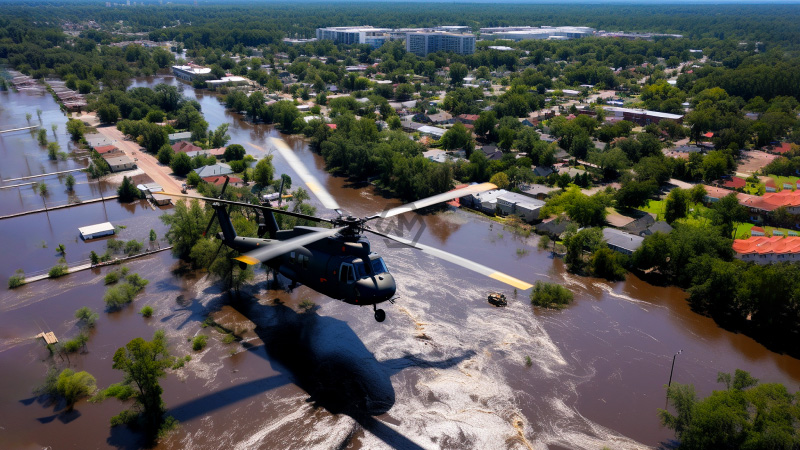- Beryl, an early-season hurricane, strikes Texas with unprecedented intensity.
- Over 3 million people left without power; at least four lives lost.
- Houston metroplex faces extensive flooding, road closures, and property damage.
Beryl’s wrath descended upon Texas with unexpected ferocity, marking one of the earliest and most intense storms of the hurricane season. The storm’s 80 mph winds and torrential rains wreaked havoc across the Houston area, inundating neighborhoods, snapping trees, and leaving a trail of destruction.
Despite the devastation, communities rallied with resilience. Residents like Mike Beggs, who endured multiple floods, reflected on the increasingly precarious conditions and considered relocating to safer areas.
Houston’s Battle with Beryl: Assessing Damage and Recovery Efforts
Beryl’s impact on Houston and its surrounding areas was profound, with the storm’s early arrival catching many off guard. The unprecedented intensity brought more than a foot of rain in some places, leading to widespread flooding and infrastructure damage. Emergency services were stretched thin as they responded to numerous calls for rescue and assistance from stranded residents. Tragically, at least four lives were lost due to the storm’s destructive force, highlighting the immediate danger posed by such weather events.
The aftermath saw neighborhoods littered with fallen trees and debris, complicating efforts to restore normalcy. Power outages affected millions, leaving homes and businesses without electricity for days. Houston, accustomed to weathering frequent storms, faced yet another daunting cleanup task amid concerns over future weather patterns in a changing climate. Despite the challenges, local communities mobilized swiftly, demonstrating resilience in the face of adversity and offering support to those most affected.
Efforts to mitigate future risks included evaluating flood defenses and reinforcing infrastructure vulnerable to extreme weather. Public safety campaigns emphasized preparedness and evacuation procedures as essential measures to safeguard lives during hurricane season. As recovery efforts continued, the city remained vigilant, knowing that the next storm could arrive unpredictably, underscoring the need for ongoing readiness and community solidarity.
In the wake of Beryl’s impact, Houston stands resilient but wary, preparing for the uncertainties of an unpredictable hurricane season. The storm’s early arrival serves as a poignant reminder of the Gulf Coast’s vulnerability and the imperative of proactive disaster planning in the face of increasingly intense weather events.



